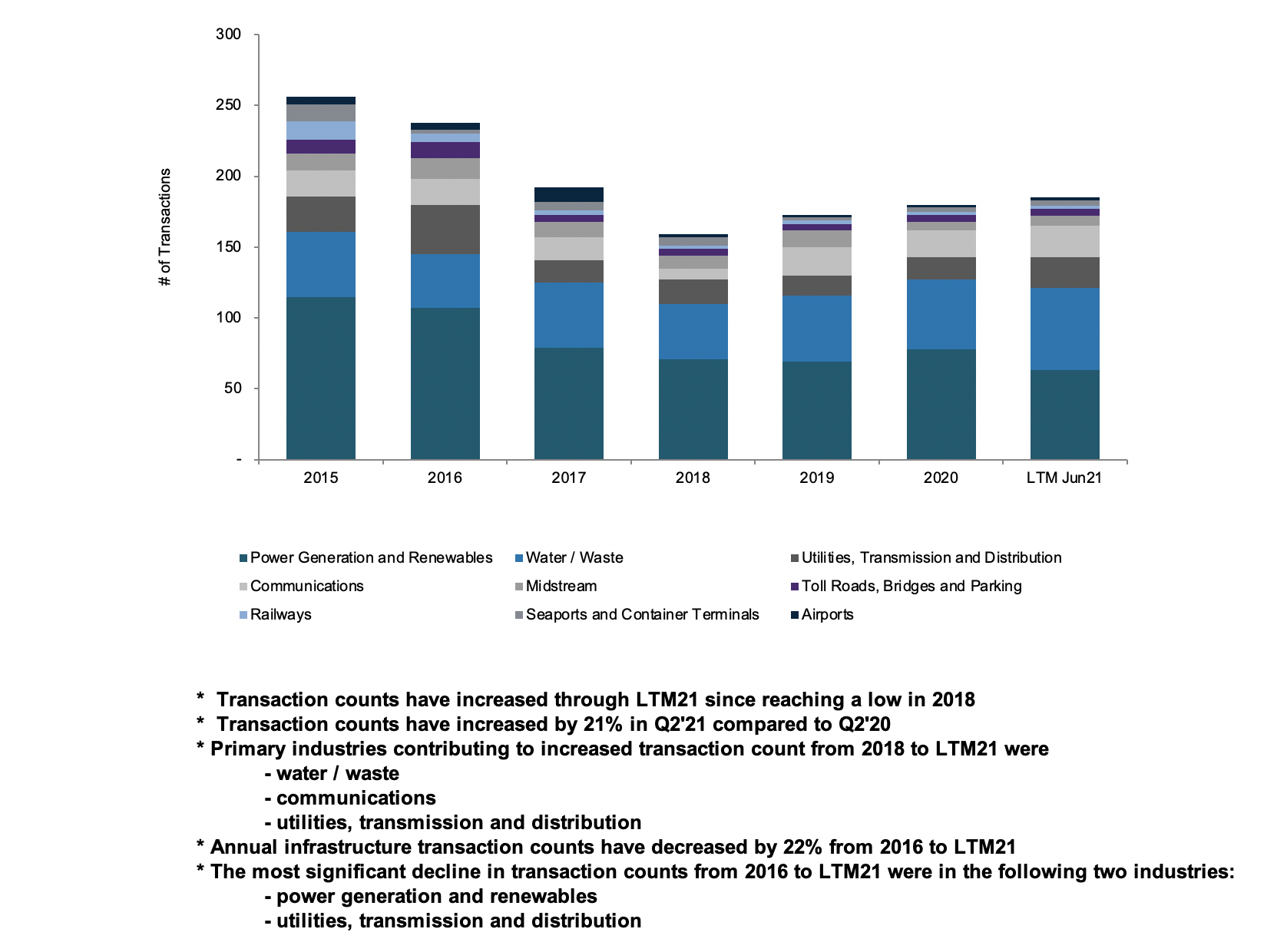Infrastructure Investment and Jobs Act: Putting Investor Opportunities in Perspective
It has been three years since the we optimistically covered the potential impact of the Trump infrastructure proposal and the priorities of the bipartisan “Problem Solver Caucus.” With a new President, House and Senate, we now have a $1.2 trillion Infrastructure Investment and Jobs Act (“IIJA”) that was signed by President Biden on November 15, 2021.
While the IIJA represents significant progress, as the first major new federal investment in infrastructure in several decades, the law is a far cry from early estimates made under both Presidents Trump and Biden of as much as $2.1 trillion. The law will make $550 billion in new investments and includes no significant revenue (or tax) increases. While this federal investment is unprecedented in recent US history, infrastructure advocates and investors alike should temper their expectations in recognition of the modest incremental increase to overall public sector spend in areas such as roads, bridges, airports and transit, which make up much of the $110 billion annual expenditures under the bill.
The $550 billion in new investments is summarized as follows:
- $110 billion – Roads, Bridges, Major Infrastructure Projects and Repairs
- $105 billion – Public Transit / Passenger and Freight Rail
- $73 billion – Clean Energy Transmission
- $65 billion – Broadband Expansion
- $55 billion – Clean Drinking Water
- $50 billion – Cybersecurity and Climate Change Mitigation
- $25 billion – Airport Upgrades and Expansions
- $17 billion – Port Infrastructure
- $50 billion – Additional Programs (e.g. Environmental Remediation, EV Infrastructure)
What Opportunities Can Investors Expect?
While many categories of expenditures will be initially modest in 2022, investors can consider several key opportunities within the bill. The expected spend on these programs is expected to increase in the next five years.
The following are a few opportunities by which we suggest investors direct their intentions as they consider what impacts the IIJA may have on their infrastructure-related investments:
- Unprecedented Public Investment in Broadband Networks – The Infrastructure Investment and Jobs Act (IIJA) includes $42 billion in direct grants to states for the deployment of new broadband. Every state (plus Washington D.C. and Puerto Rico) will receive a minimum of $100 million in funding for these communications networks, and remaining funds will be distributed based on unserved areas. This program will strengthen existing tailwinds to encourage continued investment and build out of fiber communications networks across the country with significant impact on states with limited existing access.
- Expansion of 48C Tax Credits - The 48C Tax Credit is a 30 percent investment tax credit (“ITC”) for energy-related manufacturing and industry projects. The IIJA includes an expansion of the program by $8 billion. These projects will produce renewable energy generation, storage and distribution assets which reduce emissions and generate jobs. The effect of the ITC is that investors will have less out of pocket cash outlay to construct these power and utility grid related projects, which makes certain projects economically-relevant that may not have been without the 48C credit.
- Signaling and Communications Technology – Funding for investments in transit, railroads, bridges and highways will all have impact on signaling and communications technologies including “intelligent transportation systems” technologies necessary for the operation of modern transit, rail (Amtrak and freight) and traffic control technologies. The passage of the IIJA allows the modernization of some of the older, less efficient signaling equipment that will allow for more efficient and safe transportation.
- Water Infrastructure Investments: The IIJA includes significant environmental investments, including major improvements to water infrastructure. Specifically, there is $8.3 billion in new funding available for Western Water projects and over $43 billion has been allocated to stabilize and recapitalize Drinking Water State Revolving Funds (DWSRF) for drinking water and clean water. This will support steady investment in lead pipe replacement and water / wastewater treatment facilities. Additionally, service firms in these industries may benefit from new investments in environmental remediation within the bill.
- Services / Engineering Opportunities – Growth in key industries such as materials and heavy construction due to investments in physical infrastructure may lag the passage of the bill by several years. However, planning and engineering services will see an immediate spike in demand as state and local agencies work to get projects “shovel ready” to pursue competitive grants.
Investors may find other areas of the IIJA for opportunities, as well, and should plan accordingly for the expected ramp up of the newly available funds in later periods.






